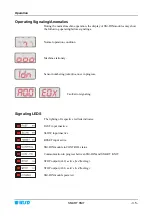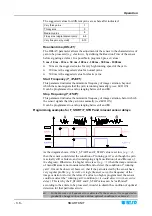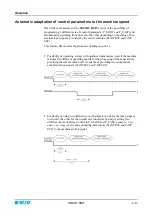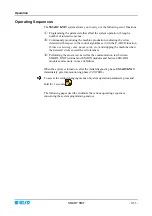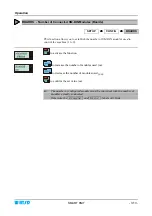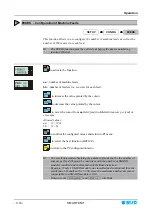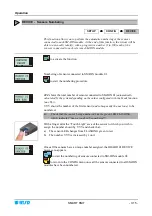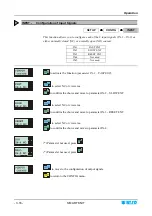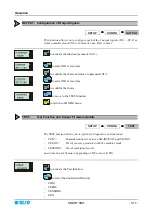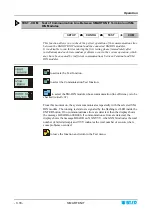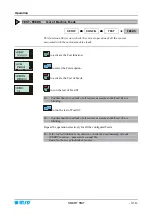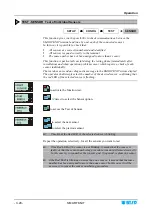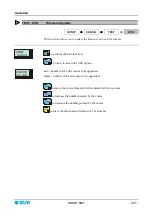
Operation
SMART KNIT
- 3.7 -
Settings that affect the sensor detection features
The
IS3
sensors do not simply detect the presence of the yarn, but they work as
true micro-computers. They provide a digital signal output, which reflects the
condition of the yarn within the detection area:
!
Normal yarn running condition
!
Yarn missing or broken condition
The functioning of the sensor is based on the principle of image variation related to
the shape of the yarn, detected by the small “camera”, which is implemented inside
the sensor. Such a variation of image
normally
occurs only if the yarn is in actual
movement inside the detection area, i.e. only if the yarn is running.
Nevertheless, in certain cases, there may be some variation of image even though
the yarn is not running normally, this is the case of a broken yarn oscillating inside
the detection area.
Finally there are other factors that can affect the detection activity of the sensors,
like the size and type of yarn
(silk, wool, acrylic, Lycra®, single filament nylon)
,
as the variation of the image depends on these factors as well.
That’s why the microcomputer embedded in the sensor, processes the images
provided by the “camera” by means of the sensor memory, which takes into
account also these other influencing factors.
The variables of this program are represented by the settings connected to the type
of yarn used and to the specific application.
!
Non-control time
(D_CNTR)
!
Signaling tolerance for broken yarn
(BROKE)
!
Signaling tolerance for uncut yarn
(UNCUT)
!
Sensitivity
(SENS)
!
Reaction Time
(DELAY)
!
Start Frequency
(F_START)
!
Stop Frequency
(F_STOP)
Non-control time
(D_CNTR)
This parameter allows you to delay the beginning of the actual control process
after the activation of SLOW EXT and FAST EXT inputs. It can be programmed
to a value ranging between
100
ms and
20
s.
Signaling tolerance for broken yarn
(BROKE)
This parameter allows you to establish the minimum duration of “broken or
missing yarn” anomaly, to signal the
(BROKE)
condition. Such duration is tightly
related to the actual machine operating speed. It can be programmed to a value
ranging between
10
ms and
1000
ms with steps of
10
ms and between
1000
ms and
16000
ms with steps of
100
ms, or it can be disabled
(OFF)
.
Signaling tolerance for uncut yarn
(UNCUT)
This parameter allows you to establish the minimum duration of “uncut yarn”
anomaly, to signal the
(UNCUT)
condition. Such duration is tightly related to the
actual machine operating speed. It can be programmed to a value ranging between
10
ms and
1000
ms with steps of
10
ms and between
1000
ms and
16000
ms with
steps of
100
ms, or it can be disabled
(OFF)
.
Sensitivity
(SENS)
The SENS parameter allows the control of the sensor sensitivity level, depending
on the article to be processed.
It can be programmed to a value ranging between
1
and
10
. The default value is
4
.
Summary of Contents for IS3F-485
Page 1: ...SMART KNIT IS3F 485 YARN CONTROL SYSTEM Operating Manual Rev 1 0 January 2006 ENGLISH ...
Page 6: ...Introduction I 2 SMART KNIT Page intentionally left blank ...
Page 11: ...Technical Data and Installation SMART KNIT 2 3 SM DIN Modules Interconnection ...
Page 38: ...Operation 3 26 SMART KNIT Page intentionally left blank ...
Page 44: ...Troubleshooting and Maintenance 4 6 SMART KNIT Page intentionally left blank ...













